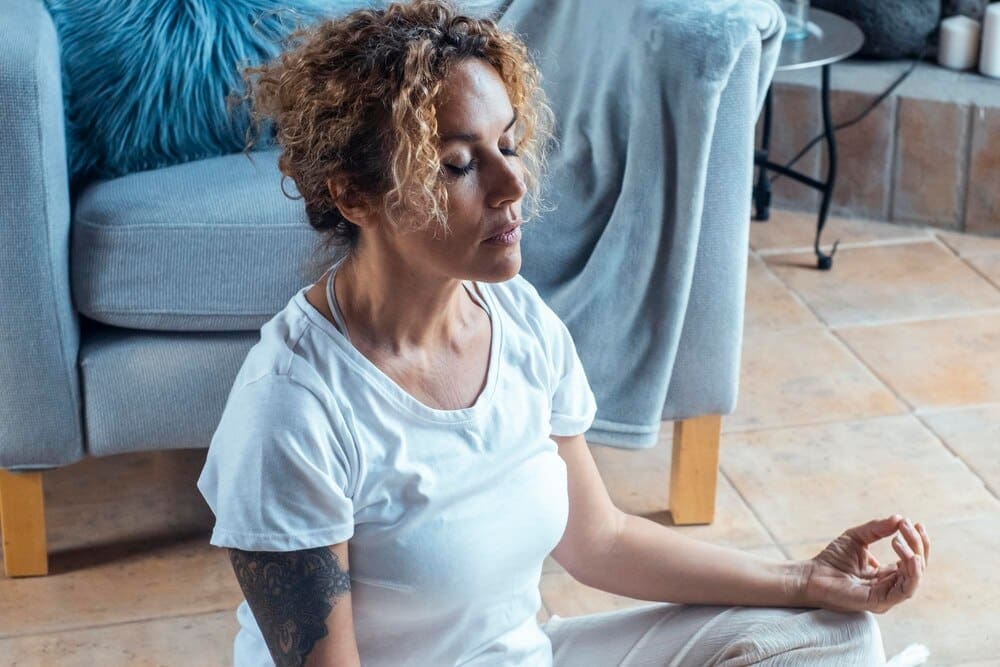In an era of constant digital connection and rising anxiety levels, millions are turning to their smartphones not as a source of stress, but as a portal to peace. Guided meditation and mindfulness apps have surged in popularity, offering accessible, on-demand tools to help users manage anxiety, improve sleep, and cultivate a sense of calm. For anyone seeking to build a meditation practice or find immediate relief from overwhelming thoughts, apps like Headspace, Calm, and Insight Timer provide evidence-based techniques developed by experts, available anytime and anywhere, fundamentally changing how we approach mental wellness in the 21st century.
The Rise of Digital Mental Health Tools
The demand for accessible mental health support has never been greater. Traditional therapy, while invaluable, can be costly, time-consuming, and subject to long waiting lists. This gap has created a fertile ground for digital solutions to flourish, offering a first line of defense against the pressures of modern life.
Technology, often blamed for increasing our stress through endless notifications and social comparison, is now being skillfully repurposed. Meditation apps leverage the very device that is always with us to deliver powerful, science-backed interventions. The convenience is undeniable; a guided session is available 24/7, whether you’re on a crowded train, at your desk, or trying to fall asleep at night.
The science behind these apps is robust. Mindfulness meditation has been shown to physically change the brain. It can strengthen the prefrontal cortex, the area responsible for focus and decision-making, while calming the amygdala, the brain’s fear and anxiety center. By consistently engaging in these practices, users can train their minds to be less reactive to stress and more present in their daily lives.
Key Features to Look for in a Meditation App
With a dizzying number of options available, choosing the right app can feel overwhelming. However, the best applications share several key characteristics that separate them from the rest. Focusing on these features can help you find the perfect fit for your personal needs and goals.
A Diverse Library of Content
A great app offers more than just a single type of meditation. Look for a varied library that includes foundational mindfulness practices, body scan meditations, loving-kindness sessions, and walking meditations. The best platforms also provide content tailored to specific situations, such as “SOS” sessions for acute anxiety, guided practices for improving focus, or meditations designed to help you fall asleep.
Qualified Instructors and Evidence-Based Techniques
The credibility of the content is paramount. The most reputable apps feature meditations led by experienced, qualified teachers, psychologists, and neuroscientists. They ground their techniques in established contemplative traditions and modern psychological research, ensuring you’re receiving guidance that is both safe and effective.
User-Friendly Interface and Customization
An app designed to reduce stress shouldn’t be stressful to use. A clean, intuitive interface is essential. Top-tier apps allow for customization, letting you choose session length, set daily practice reminders, and track your progress over time. This personalization helps you integrate the practice into your life in a sustainable way.
Pricing and Trial Periods
Most high-quality meditation apps operate on a subscription model, but they should be transparent about their costs. Look for apps that offer a substantial free trial or a generous amount of free content. This allows you to explore the platform and determine if its style, teachers, and features are right for you before committing financially.
Our Top Picks for Guided Meditation and Anxiety Relief
While the “best” app is ultimately a personal choice, several stand out for their quality, depth, and user experience. Here is a breakdown of the leading contenders in the digital wellness space.
Headspace: Best for Beginners and Building a Habit
Often considered the gateway to meditation for the masses, Headspace excels at making the practice feel accessible and unintimidating. Its structured, multi-day courses are perfect for beginners looking to build a solid foundation. The app uses friendly animations to explain complex concepts, demystifying what happens in the mind during meditation.
For anxiety relief, Headspace offers targeted courses on managing stress and navigating difficult emotions. Its library also includes “SOS” exercises—short, three-minute sessions designed for moments of acute panic or overwhelm. With a consistent, encouraging tone, it’s an excellent choice for anyone looking to build a lasting mindfulness habit from scratch.
Calm: Best for Sleep and Variety
If Headspace is the structured classroom, Calm is the expansive, soothing library. Its defining feature is the massive collection of “Sleep Stories,” bedtime tales for adults often narrated by well-known voices like Matthew McConaughey and Harry Styles. These stories are remarkably effective at helping users disconnect from anxious thoughts and drift off to sleep.
Beyond sleep, Calm boasts a vast and diverse library of meditations, music tracks designed for focus and relaxation, and “Calm Body” sessions that incorporate gentle stretching. While less rigidly structured than Headspace, its sheer volume of high-quality content makes it a top choice for users who want variety and are particularly focused on improving their sleep quality.
Ten Percent Happier: Best for Skeptics and Deep Divers
Born from news anchor Dan Harris’s book of the same name, Ten Percent Happier is designed for the “fidgety skeptic.” It takes a no-nonsense, practical approach to meditation, stripping away spiritual jargon in favor of straightforward, relatable instruction. The app’s core strength is its roster of world-renowned meditation teachers and scientists.
It goes beyond simple guided meditations, offering a rich library of video courses and talks that explore the “why” behind the practice. Users can learn directly from experts like Joseph Goldstein, Sharon Salzberg, and Judson Brewer. This makes it the ideal app for intellectually curious individuals who want to understand the science and philosophy of mindfulness on a deeper level.
Insight Timer: Best for Community and Budget-Conscious Users
Insight Timer stands apart with its unparalleled offering of free content. It hosts a staggering library of over 200,000 guided meditations from thousands of different teachers, covering every conceivable style and tradition. This makes it an incredible resource for those on a budget or for experienced meditators who want to explore a wide range of practices.
The app also fosters a strong sense of community. You can see how many people are meditating “with you” around the world at any given moment and join community groups to discuss your practice. The only potential downside is that the sheer volume of choice can be overwhelming for a complete beginner, who might benefit from the more curated approach of other apps.
Smiling Mind: Best for Families and Schools (and It’s Free)
Developed by a non-profit organization of psychologists and educators in Australia, Smiling Mind is a fantastic, 100% free resource. Its primary mission is to support positive mental health in young people, and it features structured programs tailored for different age groups, from young children to adults.
The app provides specific curricula for use in classrooms and workplaces, making it a valuable tool for educators and managers. For individuals and families seeking a completely free, evidence-based, and ethically driven meditation app, Smiling Mind is an outstanding choice.
How to Make a Meditation App Work for You
Simply downloading an app is not enough; integrating it into your daily routine is the key to unlocking its benefits. The goal is to build a sustainable practice, not to achieve perfection.
Start Small and Be Consistent
Don’t try to meditate for 30 minutes on your first day. Begin with just three to five minutes. The most important factor is consistency. Try linking your practice to an existing daily habit, such as meditating right after your morning coffee or just before you brush your teeth at night. This “habit stacking” makes it easier to remember.
Don’t Judge Your Practice
A common misconception is that meditation means clearing your mind of all thoughts. This is impossible. The real practice is noticing when your mind has wandered and gently guiding your attention back to your breath or the guided instruction. Every time you do this, you are strengthening your “focus muscle.” There is no such thing as a “bad” meditation session.
When an App Isn’t Enough
It is crucial to recognize the limitations of these digital tools. While meditation apps are incredibly effective for managing everyday stress, mild anxiety, and improving general well-being, they are not a substitute for professional mental healthcare.
If you are struggling with severe anxiety, depression, trauma, or another significant mental health condition, these apps should be seen as a supplement, not a replacement, for therapy. Please seek support from a qualified therapist, psychologist, or psychiatrist who can provide a clinical diagnosis and a comprehensive treatment plan. For immediate crises, the 988 Suicide & Crisis Lifeline is available 24/7.
Ultimately, the digital wellness landscape has democratized access to powerful mindfulness techniques. The best app for you is the one that you will actually use, one whose style resonates with your personality and fits your life. By exploring these tools and taking small, consistent steps, you can harness the power of technology to cultivate a calmer mind and a more present, fulfilling life.












